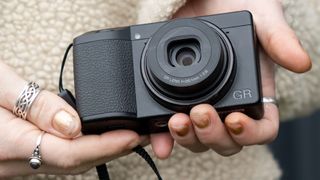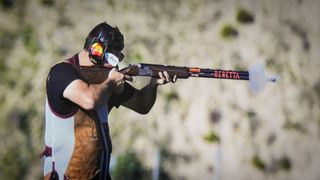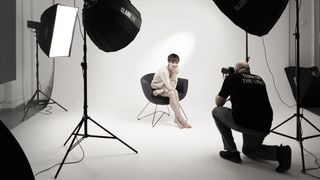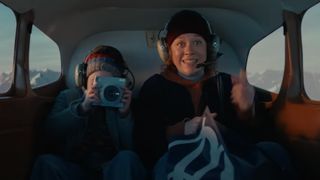The best compact cameras are perfect as a 'second' camera for DSLR or mirrorless camera owners who want to travel light now and again. They give little away in features or image quality, but they are small enough to slip into a jacket pocket. These are the ones we rate the highest.
With this guide, we have picked compact cameras that nevertheless have sensors large enough for high-quality images and the mix of automatic and manual controls that enthusiasts and experts will be looking for, and that we are used to getting in a DSLR or mirrorless camera. If you want something cheaper and simpler, we've got that covered too in our guide to the best point-and-shoot cameras.
The key point about 'compact' cameras is that the lenses are not interchangeable. The lens is built in which saves you having to think about which lenses to invest in and which lenses to pack.
Best compact cameras: our top picks

Best overall
The Fujifilm X100V is styled like a classic rangefinder camera and is the latest model in a highly successful line. The tilting touchscreen on the back makes this camera much easier to use at awkward angles, without compromising its slimline design.
Read more
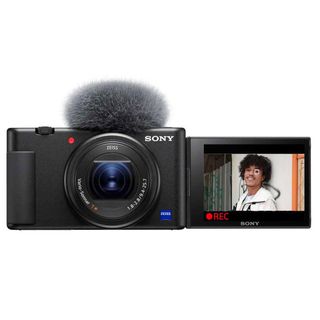
Best for YouTube
Aimed at vloggers, the Sony ZV-1 might just look like another variant from the RX100 range but in reality, it's so much more. If you've used one of the RX100s, the sensor and lens will probably be quite familiar.
Read more
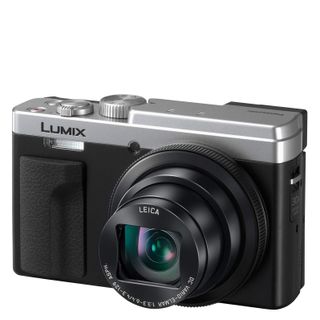
Best budget option
Not many compact cameras offer such a massive zoom, 4K video, manual shooting and a viewfinder. It doesn't have the biggest sensor or the fastest burst mode but it is an impressive little camera
Read more
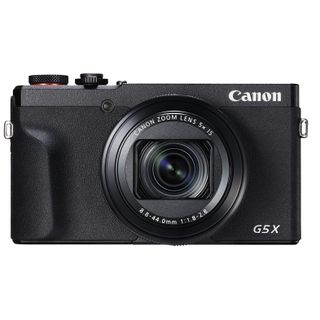
Most practical option
A great overall choice for most people, combining a compact body with a big 20x built-in zoom - a combination made possible by using a smaller-than-some 1in sensor.
Read more
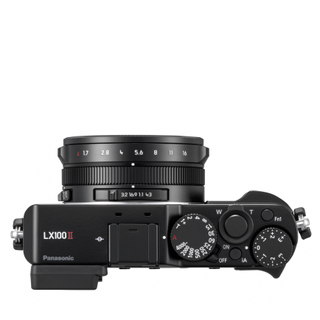
Best for stills and video
Panasonic hits a sweet spot by using a mid-sized MFT sensor, that makes it great for both shooting video, and for normal stills photos. However, you do only get a modest 3x zoom.
Read more
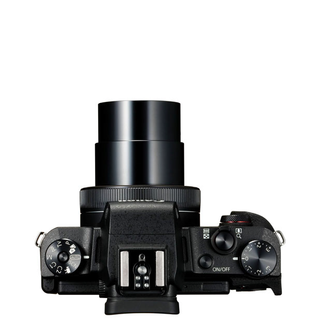
Best for stills quality
This Canon PowerShot uses a big APS-C 24-megapixel sensor that allows it to maximize image quality, whilst still offering you a 3x zoom.
Read more
The best compact cameras in 2023
Why you can trust Digital Camera World Our expert reviewers spend hours testing and comparing products and services so you can choose the best for you. Find out how we test.
Best overall compact
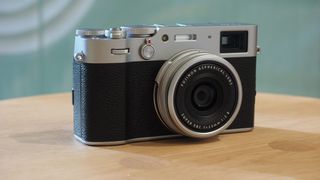
The Fujifilm X100V is styled like a classic rangefinder camera and is the latest model in a highly successful line. It has a new, sharper lens than previous X100 models, in order to do full justice to the latest sensor, and the tilting touchscreen on the back makes this camera much easier to use at awkward angles, without compromising its slimline design. The improved autofocus and 4K video capabilities bring this classic camera design right up to date and making it our best compact overall.
The X100V has external lens aperture, shutter speed, and ISO dials which, for those raised on film cameras like much of the DCW team, are just wonderful to use – and it's amazing how they encourage all the key exposure skills we still need but which are easily forgotten about with 'P' modes and digital interfaces. It also has a clever hybrid optical/digital viewfinder which is not just super bright and clear but lag-free too.
Read our full Fujifilm X100V review for more details
Best for YouTube
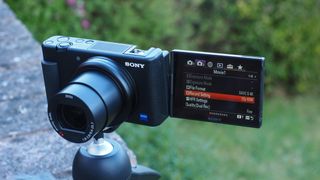
Aimed at vloggers, the Sony ZV-1 might just look like another variant from the RX100 range but in reality, it's so much more. If you've used one of the RX100s, the sensor and lens will probably be quite familiar.
Where this camera excels is the controls, rear screen, and body, making it perfect for YouTube. It too has the popular zoom range of 24-70mm with a variable aperture of f/1.8 - f/2.8 however, there is a big change in minimum focusing distance as you zoom which is annoying, especially if you're using it to record video.
The SteadyShot active stabilization wasn't the best however the autofocus is very impressive. It has a vari-angle, a rear tilting screen that means it's perfect for recording yourself or taking selfies and it comes with a mic-wind shield which means its audio quality even with the built-in mic is still pretty good. Unlike the Sony RX100 cameras, it doesn't have a viewfinder, but it produces high-quality images, is even better at video, and, best of all, it'll cost you less.
Read our full Sony ZV-1 review
Best for stills and video
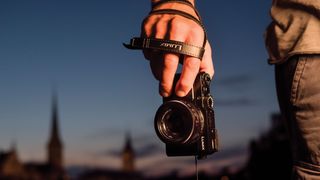
The trouble with big sensors is that you need big lenses to go with them, so there goes any kind of pocketability. Usually. But Panasonic has really hit the sweet spot with the Panasonic LX100 II giving you the best stills and video performance in a compact package.
It combines a Micro Four Thirds sensor that's not much smaller than the APS-C sensors in mode DSLRs, with a miniaturized lens assembly that powers down into a camera body slim enough to carry around anywhere. The LX100 II is a brand new version of the original LX100, which was, admittedly, starting to show its age.
The new model has a 17-megapixel ‘multi-aspect’ sensor, which means you can use its native 4:3 aspect ratio, the 3:2 ratio used by most DSLRs and mirrorless models, or a 16:9 ‘wide’ format without losing lots of megapixels through cropping. With its external shutter speed dial, lens aperture ring, and aspect ratio switch, we just love this camera.
Read our full Panasonic Lumix LX100 II review for more details
Best practical option

Compact cameras with prime lenses or short-range zooms can feel limiting. While a 24-72/75mm focal length is still pretty good, you'll still struggle to shoot anything that's a little way away.
The Canon G5X Mark II comes with a zoom range that covers 24-120mm, however, and has a variable aperture of f/1.8-/2.8 which means that at the telephoto end of the zoom range, you can still use fast shutter speeds and achieve a shallow depth of field, making it the best practical solution for everyday photo taking or when you want to leave your more expensive gear at home when on your travels.
It does have a smaller, 1-inch 20MP sensor but that can be expected with the longer zoom range. It also features 4K video, a super-fast burst mode of 30fps, and a tilting, LCD touchscreen. It has a pop-up viewfinder should you choose not to shoot in live view mode and also has a pop-up flash just in case you need some extra light. If you can live without a bigger APS-C or MFT sensor, this could be perfect.
Read our full Canon PowerShot G5 X Mark II review for more details
Best budget option

When I worked at Wex Photo Video (a British camera retailer), the Panasonic ZS80/TZ95 was my top recommended camera for people who were after something compact, with a generous zoom that didn't break the bank. For such a tiny camera, it's hard to believe it has a zoom range of 24-720mm making it possible to shoot wide landscapes and objects far in the distance. With 4K video, a pop-up flash, a range of shooting modes you'd expect to find on a mirrorless camera or DSLR and a macro mode so you can focus as close as 3cm, it really is a jack-of-all-trades system. It might not have the fastest burst mode but at 10fps it's plenty quick enough if you're mostly looking for a camera to take on holiday or as an upgrade from your camera phone.
Best for just stills

The Canon G1 X Mark III might be pretty pricey but it's practically a DSLR in a compact body. It boasts an impressive 24-megapixel APS-C sensor, the same sensor you'll find in the Canon EOS 80D DSLR making this compact a great stills-only option.
The lens has a versatile 24-72mm focal range and retracts into the camera to make it perfectly pocket-sized when you're not using it. Unfortunately, it doesn't have a fixed aperture, so at 24mm you can shoot as wide open as f/2.8 but at 72mm the aperture will drop down to f/5.6, which isn't great.
The G1 X Mark III can only shoot 1080P video, not 4K, but that doesn't bother us much as it's not what we would buy it for. It can shoot at 7fps in continuous burst mode and has wifi connectivity for transferring images on the go.
We do like this flagship PowerShot a lot, and the only thing putting us off is that it's been out for a while but the price has barely shifted. Maybe that's because of how good it is!
Read our Canon PowerShot G1 X Mark III review for more details
Best for 1-inch sensor

The Panasonic LX15, which goes by the name LX10 in North America, lacks a viewfinder, and rather than including a Micro Four Thirds sensor it has a smaller 1-inch 20-megapixel sensor which will reduce image resolution and performance.
However, it is capable of recording 4K video and it has a super-responsive touch screen which makes focusing really easy. It has a zoom range of 24-72mm and a really fast variable aperture of f/1.4-2.0, making it the fastest compact zoom lens available.
Overall, it's a great little camera that has a perfect balance of features, performance, and pricing. It's small enough to fit in a pocket but is powerful enough to take some stunning photos. It's just that... having used both, we'd rather pay the extra for the LX100 II.
Read our full Panasonic Lumix LX10 review for more details
Best for megapixels
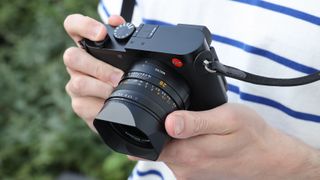
Leica cameras are a bit like Marmite – you either love them or hate them. No matter where you stand, you can't deny they are incredible cameras that offer exceptional image quality. The new Leica Q3 features an impressive full-frame 60-megapixel sensor. It has a fixed 28mm f/1.7 lens, making it one of the fastest prime lenses available on a compact camera. This update to the Leica Q2 now also shoots 8K video.
The biggest downside of this camera is the thing that will put most people off – the price. It's an insanely expensive bit of kit and it would probably be higher on our list if it didn't cost an arm and a leg.
You could pick up one of the best mirrorless cameras and a lens for less, but sometimes the experience of using a Leica is worth the money. Other than the price, they're relatively hard to get hold of so if you have your heart set on one, you might have to hunt for one first.
Read our full Leica Q3 review
Best for autofocus
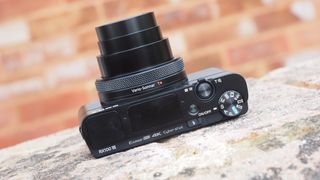
This is the seventh generation of this high-spec Sony compact camera family. The RX100 VII uses a one-inch sensor, which allows it to pack in an 8x zoom lens into a small package - giving you an effective focal length range of 24-200mm. This gives you the scope to shoot a huge variety of subjects with ease. Incredibly it can capture action at up to 90fps in short bursts - or at 20fps for more prolonged periods – and then there is 4K video too. The autofocus uses the tracking system developed for the Sony A7 mirrorless series, with human and animal eye AF detection. This is a lovely camera, but we just wish it was a bit more affordably priced.
See our full Sony RX100 Mark VII review or
Compare Sony RX100 III vs RX100 IV vs RX100 V vs RX100 VI vs RX100 VII
Best for street photography

The Ricoh GR IIIx is a street-savvy version of the Ricoh GR III with a better-suited 40mm lens instead of the original 28mm. It does have a few other benefits to it including an optional 1.5x teleconverter lens which can be attached to the fixed lens for a more zoomed-in view.
For an APS-C camera, it's incredibly compact making it ideal for street or travel photography, and with a wide f/2.8 lens, super fast eye AF plus sensor-shift stabilization, it's great for portraits too. It's pocket-sized but it's big on features boasting 2GB internal storage and built-in NDs. It truly is a compact camera aimed at photographers who want to have total control.
Read our full Ricoh GR IIIx review
How to choose a compact camera
You might imagine that one compact camera will be much like another, but there are three key features to take into account before you make a decision.
1) Prime vs zoom lenses:
With a compact camera is that the lens is non-interchangeable, so the one it comes with will have to do all the jobs you want the camera for. You may be happy with a single focal length prime lens, or you may prefer the extra scope of a zoom. The focal length range on these zoom cameras varies enormously - from 3x up to over 100x on a bridge camera.
2) Viewfinders:
If you find you use the rear screen on a camera most of the time, you may not need an eyelevel viewfinder – and this does give you more scope with cameras. Some photographers, though, would be lost without a viewfinder.
3) Sensor size:
It is not just about megapixels, image quality also improves by using a larger sensor. Full-frame is the biggest size sensor found on compacts, but full-frame compacts are very expensive and have a fixed wide-angle lens. If you want a zoom, the biggest-sized sensor is APS-C which under half the size of full frame. But if you want a big zoom in a pocketable camera, then you will need a model with a 1in sensor (about a third of the size of an APS-C sensor). An MFT sensor is smaller than an APS-C sensor, but bigger than a 1in one.
How we test compact cameras
We test cameras both in real-world shooting scenarios and in carefully controlled lab conditions. Our lab tests measure resolution, dynamic range, and signal-to-noise ratio. Resolution is measured using ISO resolution charts, dynamic range is measured using DxO Analyzer test equipment and DxO Analyzer is also used for noise analysis across the camera's ISO range. We use both real-world testing and lab results to inform our comments in buying guides.
Read more:
The best full-frame compact cameras
Best APS-C compact cameras
Best travel cameras
Best action cameras
The best digital cameras
Best cheap cameras
Best cameras under $100
Best cameras under $200
